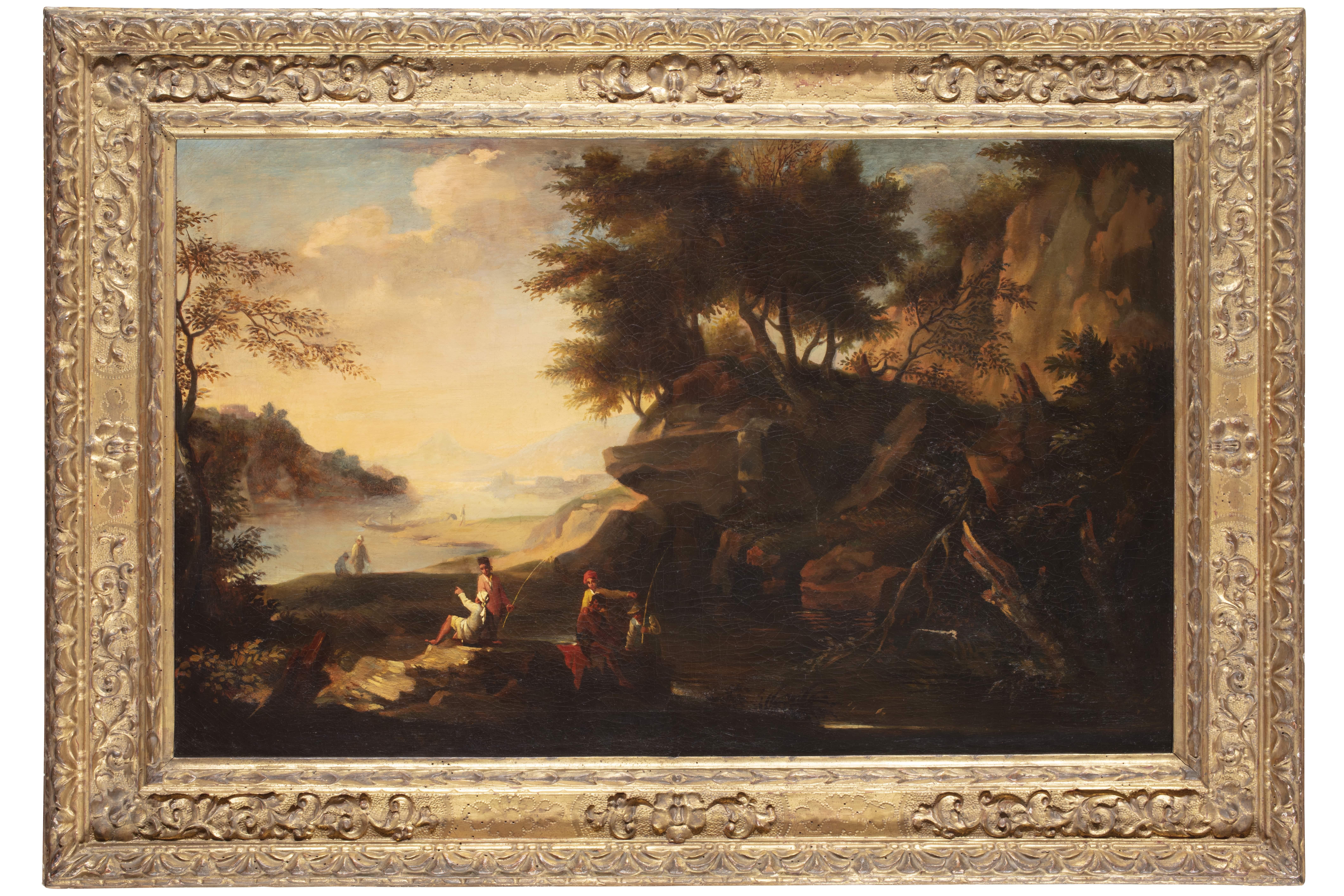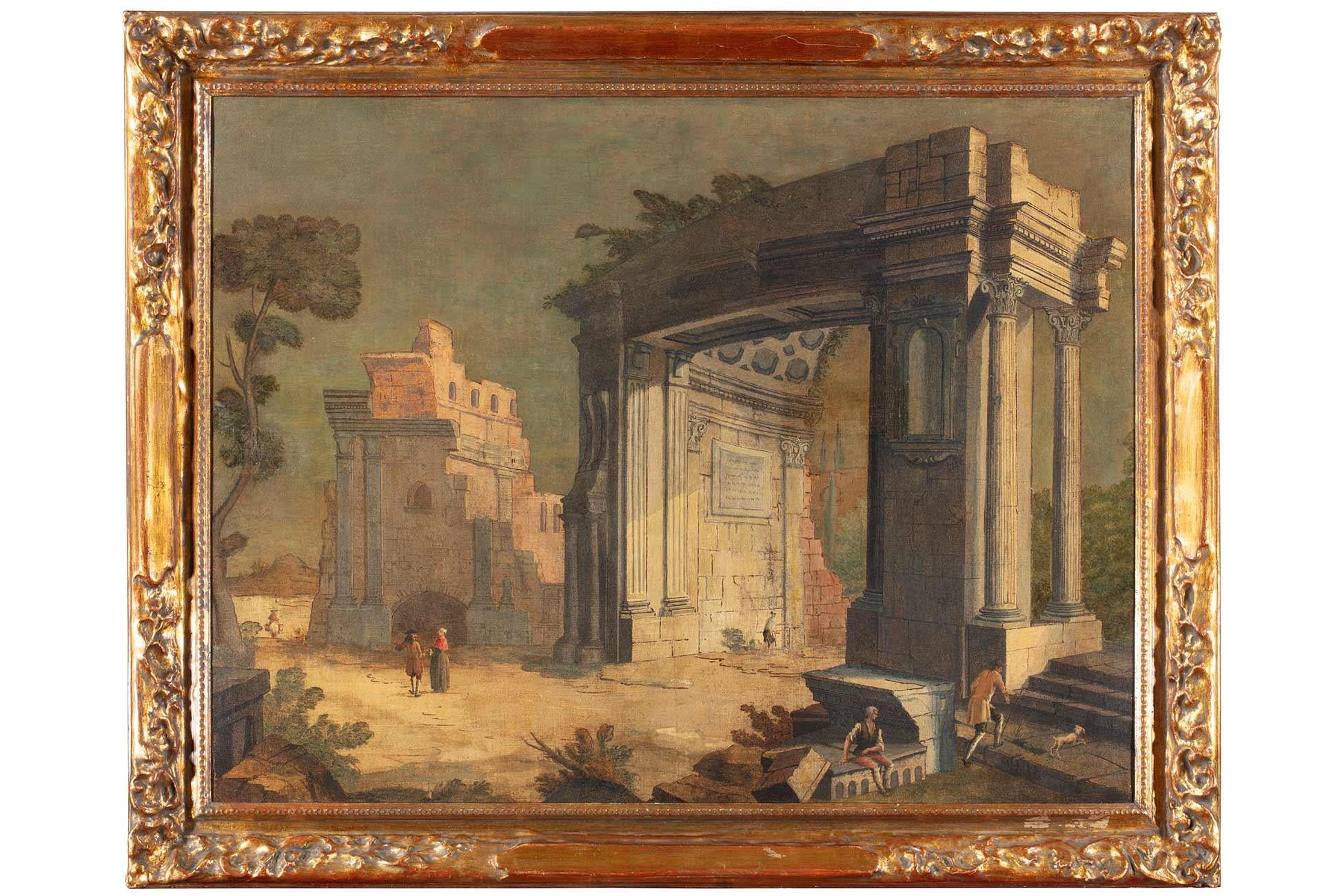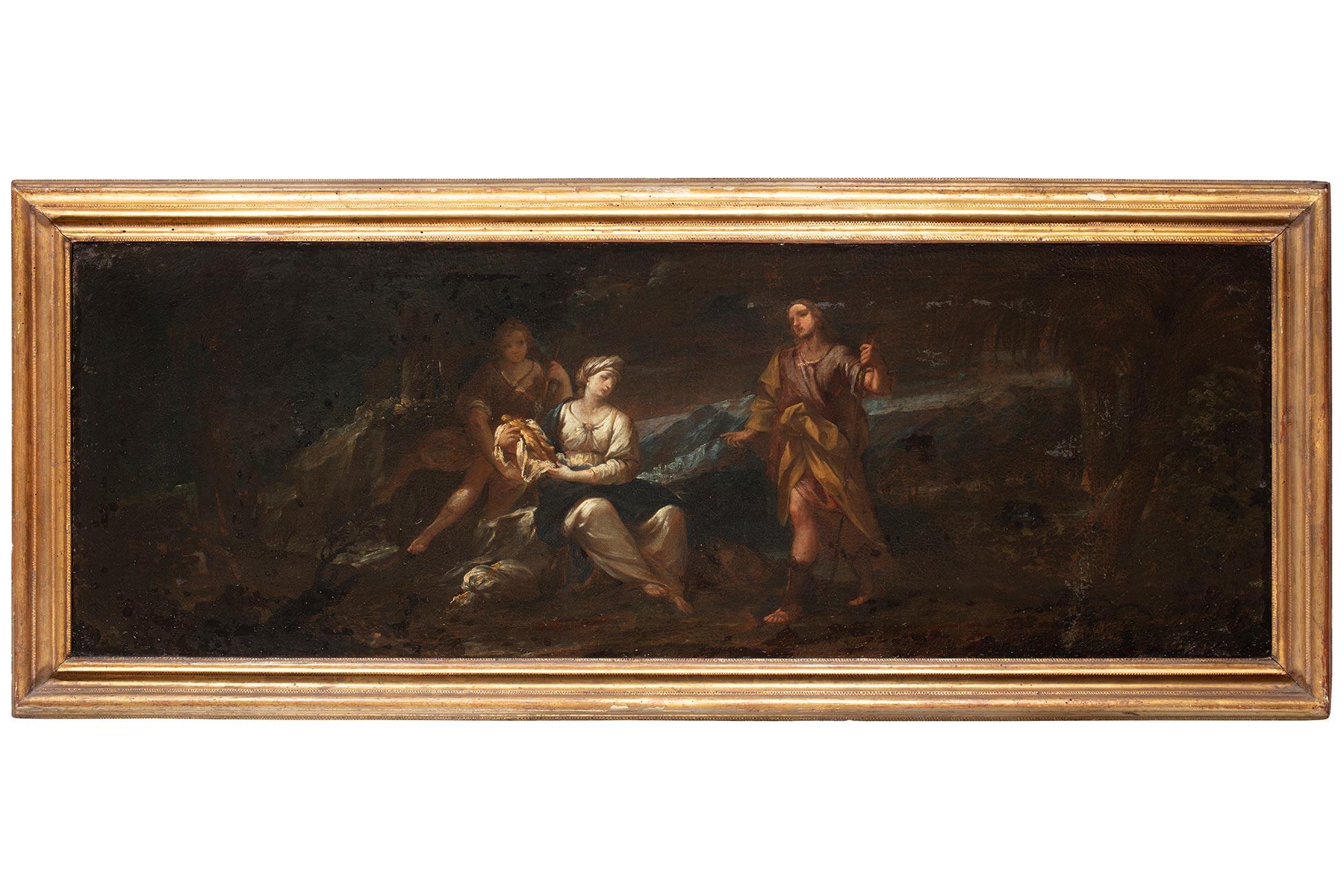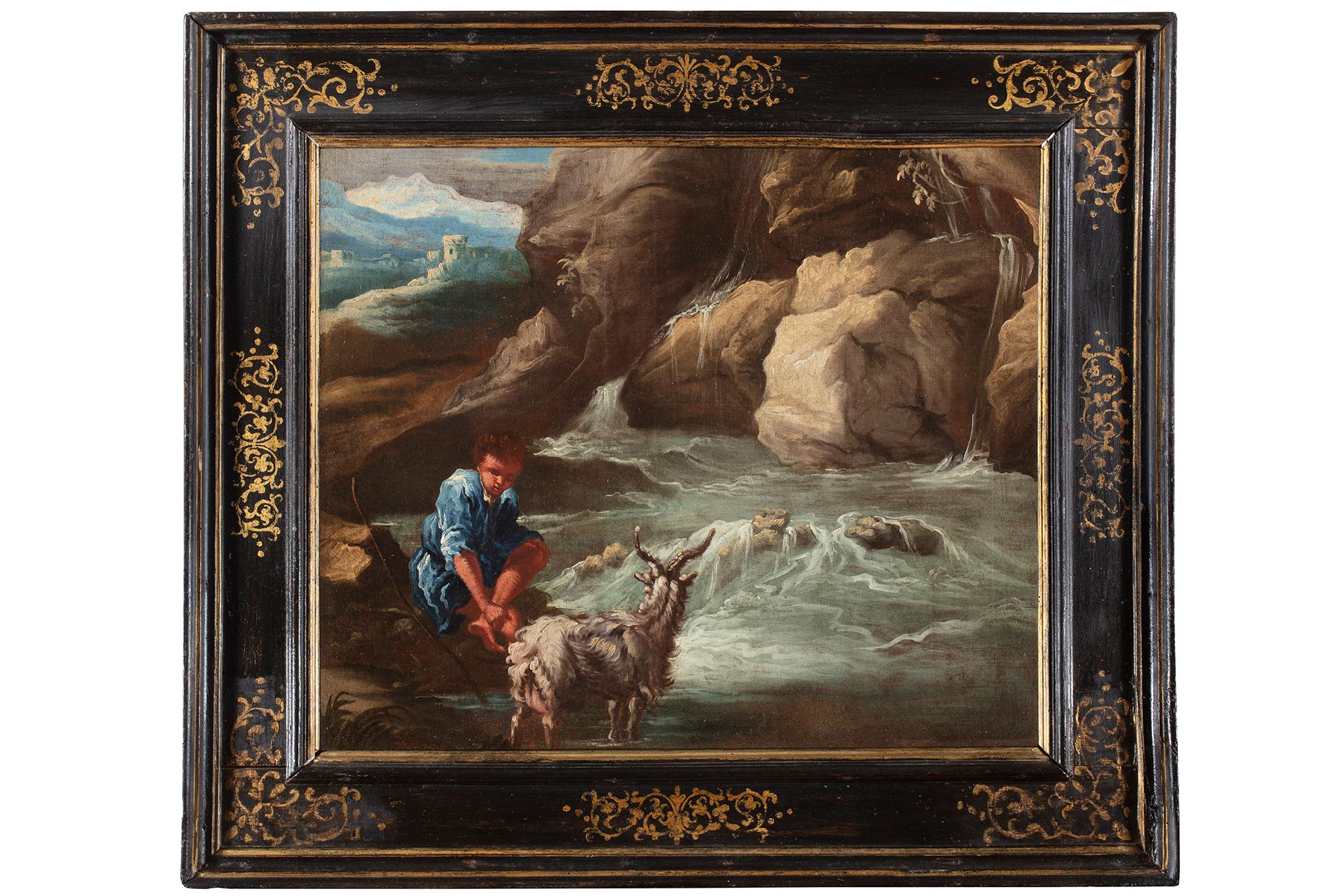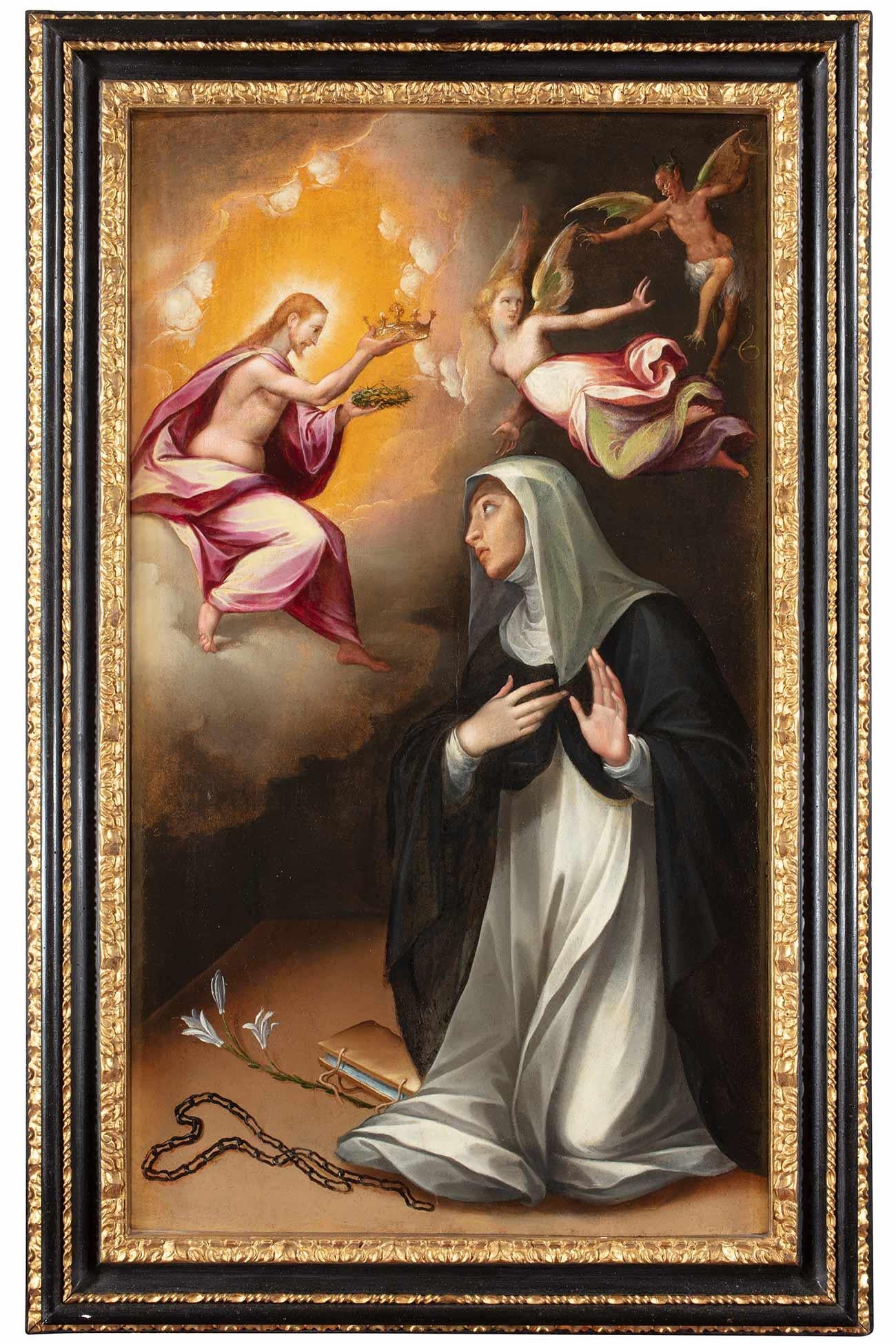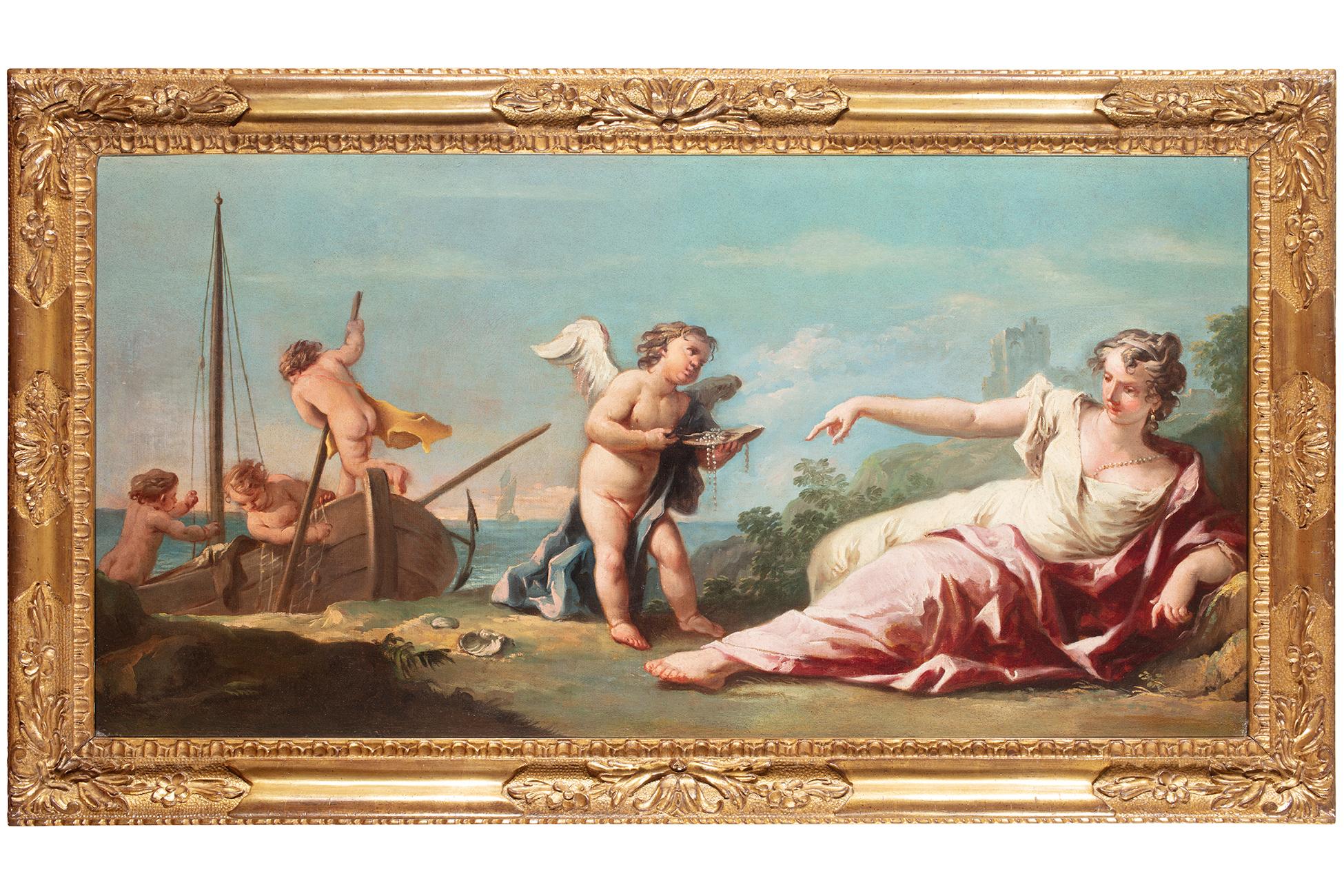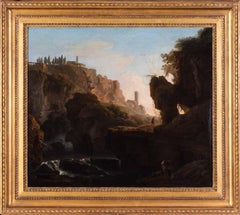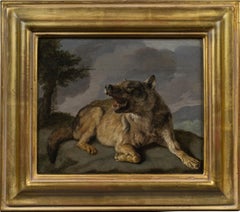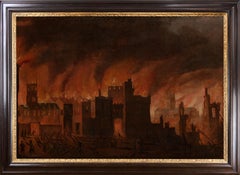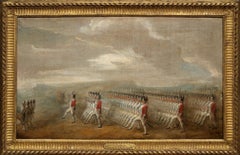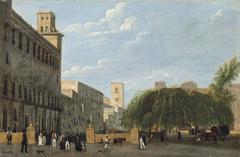
Figures in an Italianate Square
Want more images or videos?
Request additional images or videos from the seller
1 of 11
Giuseppe CanellaFigures in an Italianate Square
About the Item
- Creator:Giuseppe Canella (1788 - 1847, Italian)
- Dimensions:Height: 10.5 in (26.67 cm)Width: 13.75 in (34.93 cm)Depth: 2.25 in (5.72 cm)
- Medium:
- Movement & Style:
- Period:
- Condition:Oil on canvas, relined, cracquelure, possible surface dirt, a few small retouches, overall good condition.
- Gallery Location:Petworth, GB
- Reference Number:1stDibs: LU54031532103
About the Seller
4.9
Platinum Seller
These expertly vetted sellers are 1stDibs' most experienced sellers and are rated highest by our customers.
Established in 2010
1stDibs seller since 2017
227 sales on 1stDibs
Typical response time: 2 hours
More From This SellerView All
- Claude-Joseph Vernet 18th century Old Master landscape, grand tour ItalyBy Claude-Joseph VernetLocated in Petworth, West SussexClaude-Joseph Vernet (French, 1714 – 1789) Fisherman by a cascade in a gorge Oil on canvas 22.1/4 x 25.1/2 in. (56.5 x 64.7 cm.) Provenance: The estate of the late Betty, Lady Grantchester Du Catalogue Collection #39 Christie's London, 3 Dec 1997, Lot 52 (£41,000) Claude-Joseph Vernet was the leading French landscape painter (with Hubert Robert) of the later 18th century. He achieved great celebrity with his topographical paintings and serene landscapes. He was also one of the century's most accomplished painters of tempests and moonlight scenes...Category
18th Century Old Masters Landscape Paintings
MaterialsOil, Canvas
- Large oil paintings of Gulls at St. Ives bay, Cornwall by British artist TitcombLocated in Petworth, West SussexWilliam Holt Yates Titcomb (British, 1858 – 1930) Gulls at St. Ives bay Oil on canvas Signed ‘W. H. Y. TITCOMB’ (lower right) 34 x 44 in. (86.3 x 111.8 cm.) Frame measurements: 110.3 x 136 cm.) William Holt Yates Titcomb (1858 - 1930) was an English artist. He was a figurative oil painter, particularly known for his depictions of the Cornish fisherfolk. Titcomb was born in Cambridge, the eighth child and first son of the Rev. Jonathan Holt Titcomb and his wife Sarah. He was educated at Westminster School in London and began his art training at the South Kensington School. His father was appointed the first Bishop of Rangoon, Burma in 1877 and Titcomb joined him there in December 1880. In Burma he made a series of paintings and sketches of life in the local monasteries. Titcomb was taught in Paris by Gustave Boulanger and at the Royal College of Art in Antwerp by Charles Verlat. He married Jessie Ada Morison, in 1892. She was also an artist, living at the time in St. Ives, Cornwall. His painting Primitive Methodists at Prayer, was displayed at the Dudley Museum and Art Gallery in 1889. It won many international medals and was the first of three paintings that Titcomb completed of the Primitive Methodist congregation of Fore street, St. Ives. In 1909, Titcomb settled in Bristol, where he was already an elected Academician of the Bristol Academy...Category
Early 20th Century Academic Animal Paintings
MaterialsOil, Canvas
- 19th C. German painting of figures at a waterfall in the manner of FriedrichLocated in Petworth, West SussexA very romantic and detailed painting of figures enjoying the views of a waterfall in summertime, Europe Circle of Caspar David Friedrich (Germ...Category
19th Century Academic Figurative Paintings
MaterialsCanvas, Paper, Oil
- Mid 20th Century oil painting of Venice by French artist Clement ServeauBy Henri Clement ServeauLocated in Petworth, West SussexA beautiful and bold composition of La Cad'oro in Venice with clear blue skies above and a cubist reflections of the buildings below in different shades of blues and turquoises. H...Category
20th Century Expressionist Landscape Paintings
MaterialsCanvas, Oil
- British 20th Century oil painting of The palace at Fontainebleau, paris, FranceBy Walter TaylorLocated in Petworth, West SussexA striking and simply composed painting of The Palace at Fontainebleau by Walter Taylor. Walter Taylor (British, 1860-1943) The palace at Fontainebleau Oil on canvas Signed `Walter Taylor’ (lower right) 25 x 30 in. (63.5 x 76.3 cm.) Born in Leeds, this artist was trained as an architect but eventually found his calling in painting town scenes, landscapes, and interiors using both oil and watercolour. With a privileged upbringing thanks to his tobacco manufacturer father, he attended art school in Paris before studying under Fred Brown at the Royal College of Art. In 1899, he married Hylda Matheson, but their honeymoon ended in tragedy with her untimely death. He eventually settled in Bedford Square, Brighton, during the 1910s and 1920s, but maintained a studio at 18 Fitzroy Street in London from 1915 onwards. A prominent figure in the art world, he was a founder member and secretary of the Camden Town Group, a member of the New English Art Club, and one of the founding members of the London Group in 1913. He exhibited with the London Group until 1934, showcasing his work that often drew inspiration from his travels in Europe, which sometimes included the company of fellow artist Walter Sickert. Additionally, he painted extensively in London, Brighton, and Hove. This artist also had a keen eye for collecting works by other artists, amassing an important collection that included pieces by Matisse, Bonnard, Vuillard, Dufy, Gilman, Matthew Smith...Category
20th Century Post-Impressionist Landscape Paintings
MaterialsCanvas, Oil
- 20th Century British artist Leigh-Pemberton, painting of horses in landscapeLocated in Petworth, West SussexJohn Leigh-Pemberton (British, fl. 1933 – 1959) Timber horses, Tazmania Signed ‘John Leigh-Pemberton 1934’ (lower right) Oil on canvas 25 x 30 in. (63.5 x 76.2 cm.) Leigh-Pemberton is mainly known for his illustrations for the shell guides...Category
20th Century Modern Animal Paintings
MaterialsCanvas, Oil
You May Also Like
- A WolfLocated in New York, NYProvenance: The Marchesi Strozzi, Palazzo Strozzi, Florence Sale, Christie’s, London, May 20, 1993, lot 315, as by Carl Borromaus Andreas Ruthart...Category
17th Century Old Masters Animal Paintings
MaterialsPaper, Canvas, Oil
- Early oil depicting the Great Fire of LondonLocated in London, GBThe Great Fire of London in September 1666 was one of the greatest disasters in the city’s history. The City, with its wooden houses crowded together in narrow streets, was a natural fire risk, and predictions that London would burn down became a shocking reality. The fire began in a bakery in Pudding Lane, an area near the Thames teeming with warehouses and shops full of flammable materials, such as timber, oil, coal, pitch and turpentine. Inevitably the fire spread rapidly from this area into the City. Our painting depicts the impact of the fire on those who were caught in it and creates a very dramatic impression of what the fire was like. Closer inspection reveals a scene of chaos and panic with people running out of the gates. It shows Cripplegate in the north of the City, with St Giles without Cripplegate to its left, in flames (on the site of the present day Barbican). The painting probably represents the fire on the night of Tuesday 4 September, when four-fifths of the City was burning at once, including St Paul's Cathedral. Old St Paul’s can be seen to the right of the canvas, the medieval church with its thick stone walls, was considered a place of safety, but the building was covered in wooden scaffolding as it was in the midst of being restored by the then little known architect, Christopher Wren and caught fire. Our painting seems to depict a specific moment on the Tuesday night when the lead on St Paul’s caught fire and, as the diarist John Evelyn described: ‘the stones of Paul’s flew like grenades, the melting lead running down the streets in a stream and the very pavements glowing with the firey redness, so as no horse, nor man, was able to tread on them.’ Although the loss of life was minimal, some accounts record only sixteen perished, the magnitude of the property loss was shocking – some four hundred and thirty acres, about eighty per cent of the City proper was destroyed, including over thirteen thousand houses, eighty-nine churches, and fifty-two Guild Halls. Thousands were homeless and financially ruined. The Great Fire, and the subsequent fire of 1676, which destroyed over six hundred houses south of the Thames, changed the appearance of London forever. The one constructive outcome of the Great Fire was that the plague, which had devastated the population of London since 1665, diminished greatly, due to the mass death of the plague-carrying rats in the blaze. The fire was widely reported in eyewitness accounts, newspapers, letters and diaries. Samuel Pepys recorded climbing the steeple of Barking Church from which he viewed the destroyed City: ‘the saddest sight of desolation that I ever saw.’ There was an official enquiry into the causes of the fire, petitions to the King and Lord Mayor to rebuild, new legislation and building Acts. Naturally, the fire became a dramatic and extremely popular subject for painters and engravers. A group of works relatively closely related to the present picture have been traditionally ascribed to Jan Griffier...Category
17th Century Old Masters Landscape Paintings
MaterialsCanvas, Oil
- The Parade of Swiss Guards a painting on canvas by Gabriel de Saint-AubinLocated in PARIS, FRIn this painting, Gabriel de Saint-Aubin, the great chronicler of the reign of Louis XV, takes us to the annual parade of the Swiss Guards at the Plaine de...Category
1760s Old Masters Figurative Paintings
MaterialsCanvas, Oil
- View of Ponte Milvio in RomeLocated in Roma, RMNorthern painter active in Rome in the second half of the 17th century, View of Ponte Milvio Oil painting on canvas 73 x 97 cm in coeval Roman Salvator Rosa frame.Category
18th Century and Earlier Old Masters Landscape Paintings
MaterialsCanvas, Oil
- 17th Century by Simone Cantarini Adoration of The Magi Painting Oil on CanvasLocated in Milano, LombardiaSimone Cantarini (Pesaro 1612 - Verona 1648) Adoration of the Magi Oil on paper applied to canvas, cm. 16,5 x 24 – with frame cm. 22 x 29 Antique sh...Category
Early 17th Century Old Masters Figurative Paintings
MaterialsCanvas, Cotton Canvas, Oil
- 18th Century by Antonio Stom Architectural Capriccio Oil on Canvas_By Antonio StomLocated in Milano, LombardiaAntonio Stom (Venice c. 1688 - 1734) Architectural Capriccio oil on canvas, cm. 88 x 113 - with frame cm. 106 x 132 Carved, sculpted and gilded wooden frame Expertise: Giancarlo S...Category
Early 18th Century Old Masters Landscape Paintings
MaterialsCanvas, Cotton Canvas, Oil



